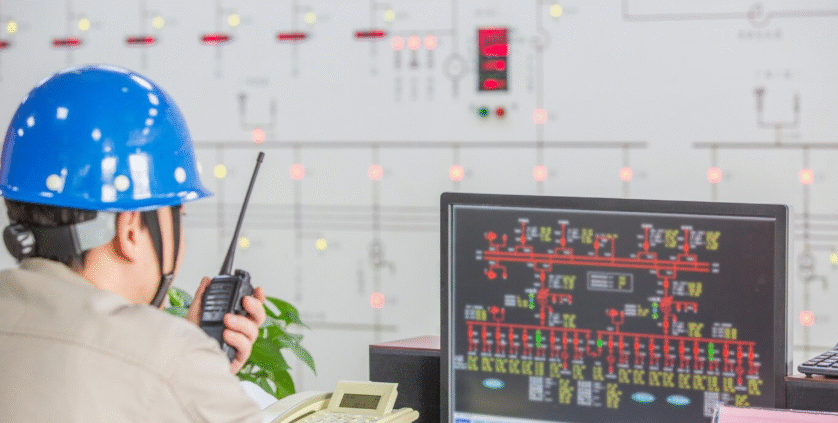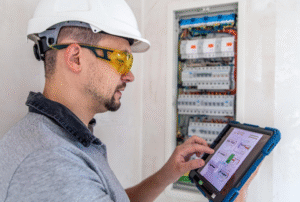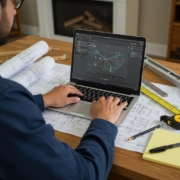Things have been evolving quickly in the realm of electrical estimation. Professionals now depend on accuracy more than ever, from spreadsheets and paper takeoffs to tools made just for the job. Electrical estimating software is now an important aspect of how big and commercial electrical jobs are bid and tracked.
This change had to happen because of tight budgets, rigorous schedules, and a growing requirement for precision. But what comes next? This article goes into great detail about how electrical estimating software is changing, what electrical contractors use today, and why these tools are more vital than ever. Let’s make things simple.
Why Electrical Estimating Needs an Upgrade
Estimating used to require a lot of guesswork, handwritten notes, and math. That was okay back then. There are hundreds of supplies, changing labor rates, and big risks if mistakes are made in today’s commercial electrical jobs. A minor mistake might cost thousands of dollars.
This is where electrical estimation software comes in. It does material takeoffs automatically, uses the most recent prices, and cuts down on mistakes made by people. A recent survey found that more than 73% of contractors that used estimating software were able to shorten the time it took to get bids by 40%. That’s not just helpful; it’s necessary in today’s market.
But technology keeps moving forward. Electrical estimating software will do more than just automate things in the future. Now, the focus is on speed, how well it works with sketching tools, and how accurate the data is in real time, all without relying on cloud-based services.
How Electrical Estimating Software Works
Don’t make this too hard. Electrical estimating software lets contractors figure out how much time, money, and supplies a task will need. You enter the parameters, pick the materials, and select the hours of work. Then it does the math.
Users can do the following in systems like Best Bid or ConEst:
- Make elaborate assemblies for panels, lighting, switchgear, and conduit.
- Access built-in labor units that meet NECA criteria.
- Use pricing updates from local providers, not cloud-based ones. These should come from actual downloads and local databases.
This saves time and minimizes the guessing. Things that used to take days now just take a few hours.
What Estimating Software Does Electrical Contractors Use?
That’s what everyone wants to know. There are a lot of tools out there, but not all of them are good. So, what kind of estimating software do most electrical contractors use?
Commercial contractors usually pick software that:
- Works on local PCs or when not connected to the internet.
- They can control material databases.
- Works with drawing programs like AutoCAD.
Electrical Bidding Software like Best Bid is made for estimators that need speed, detail, and control without needing an IT department to run it. Many professionals use it. It’s common in schools, industrial buildings, and infrastructure projects where every little thing matters. You should view the YouTube video “What Is the Best Electrical Estimating Software?” if you want a detailed look at this.
Statistically, tools with local price libraries cut down on job costing mistakes by 33% compared to doing it by hand, especially on non-residential builds.
The Role of Electrical Bidding Software in Today’s Projects
Electrical Bidding Software is more than just calculators with nice designs. These tools let estimators make professional bids from cradle to end, and they do it faster and more precisely.
Here is what they offer:
- Pre-built assemblies save time on things like cable tray runs and emergency lighting systems that are used a lot.
- Calculators for labor that take into account the skill levels of different workers and how easy it is to get to the location.
- Bids that are ready to be sent out for export—no more formatting needed.
The best electrical bidding software will even enable you make modifications on the fly. What if a client wishes to change a spec at the last minute, like switching from fluorescent lights to LEDs? That used to take a long time. With new software, it only takes a few minutes.
Why Simpler, Non-Cloud Systems Are Winning
These days, everyone is pushing the cloud. But not everyone wants to use the internet to get things done. Some contractors work on protected sites, in remote areas, or simply don’t want their task data stored elsewhere else. Contractors have authority over electrical estimating software that runs on their own computers. No updates that happen by chance. No disclosures of information. There is no lag time when you wait for a signal to upload drawings.
And here’s the most important thing: these systems are faster. A desktop tool does math in real time without buffering. In a situation when a bid can mean getting or losing a job worth $1.2 million, speed is important.
Conclusion
Electrical estimating is no longer simply about numbers; it’s also about speed, strategy, and dependability. The best tools are the ones that make things easy, safe, and correct. Electrical estimating software has transformed the way professionals work on projects, whether they’re making a quote or changing a big offer.
This program will only get better as more people want it. It will have faster tools, smarter insights, and better project results. But the purpose stays the same, no matter how complex technology gets: to help estimators get it right the first time. Check out Best Bid to learn about a great tool that experts trust.
To explore a powerful tool trusted by professionals, check out Best Bid.









